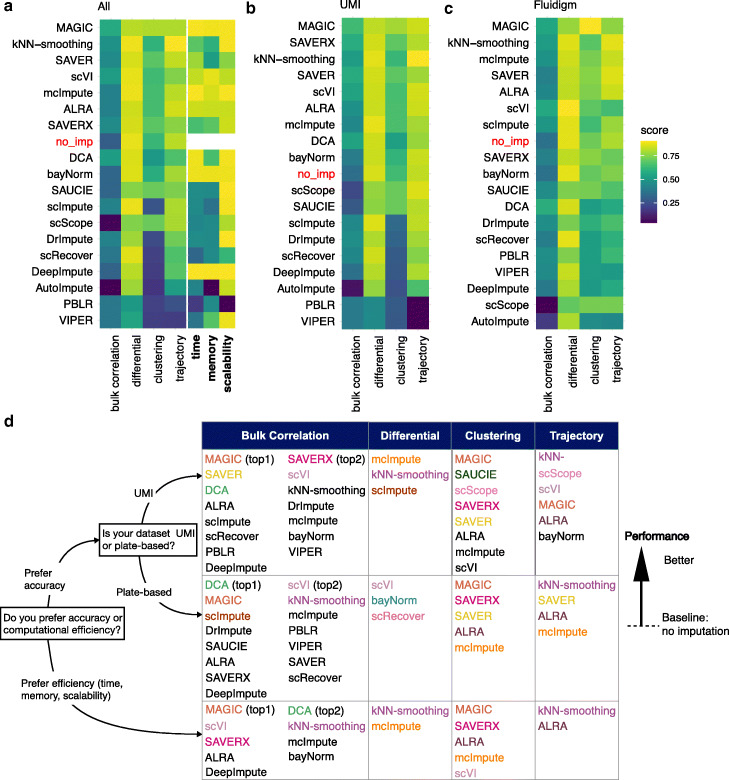Fig. 6.
Overall summary of results evaluating imputation methods for scRNA-seq data. Performance of imputation methods in all evaluation aspects: similarity between imputed single-cell and bulk profiles (denoted as “bulk correlation”), differential expression (“differential”), unsupervised clustering (“clustering”), trajectory inference (“trajectory”), time, memory usage, and scalability. The units of computational time (in minutes), memory usage (in maximum resident set size of all tasks in job (MaxRSS or maximum resident set size of all tasks in a job) in gigabytes (GB)), and scalability (w.r.t. the number of observations or cells) were all scaled to be in [0,1] to apply the same color scale. For more details on units of computational time, memory usage and scalability, see the “Methods” section and details in Additional file 1: Figure S11. A higher score represents a better performance. Imputation methods are ranked by averaging the scores in bulk correlation, differential, clustering, and trajectory. No imputation is abbreviated as “no_imp”. a Performance scores and the ranking of all imputation methods using datasets across UMI-based and plate-based (Fluidigm) protocols; b using UMI-based data only; c using Fluidigm data only. d Practical guidelines for method users. For users who prefer imputation accuracy (UMI-based and plate-based rows in the table), we listed methods that perform better than no imputation for each analysis task. For each task, methods with better performance are listed on top, and the top five methods are displayed in color. For users who prefer computational efficiency (last row in the table), we first obtained methods that were ranked in top 50% in terms of overall time, memory, and scalability performance. Then, for each analysis task, we retained methods that outperformed no imputation in terms of accuracy, and we listed these methods in the table in the rank order based on their overall accuracy performance (averaged across UMI- and plate-based platforms) in each analysis

